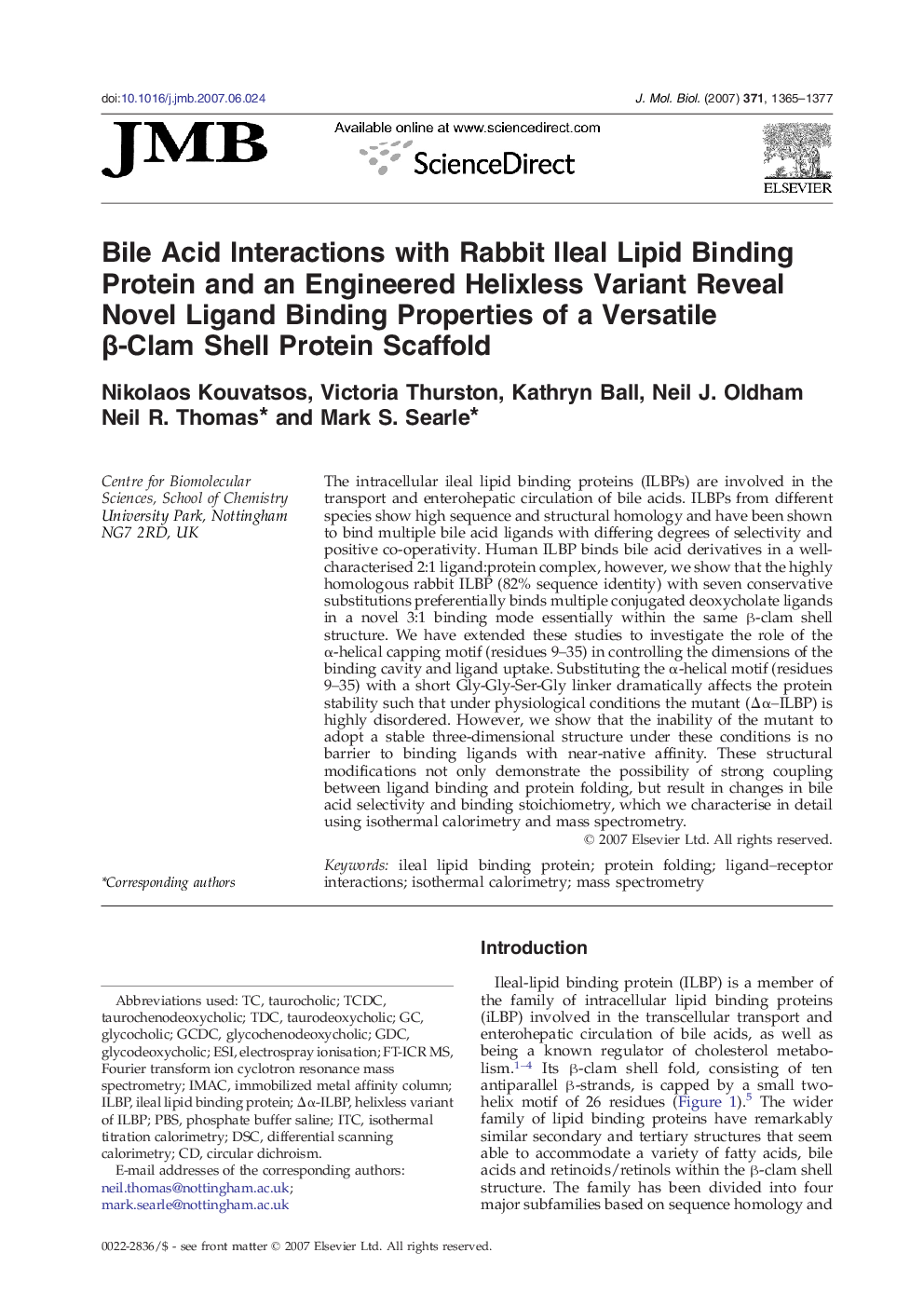| Article ID | Journal | Published Year | Pages | File Type |
|---|---|---|---|---|
| 2188178 | Journal of Molecular Biology | 2007 | 13 Pages |
The intracellular ileal lipid binding proteins (ILBPs) are involved in the transport and enterohepatic circulation of bile acids. ILBPs from different species show high sequence and structural homology and have been shown to bind multiple bile acid ligands with differing degrees of selectivity and positive co-operativity. Human ILBP binds bile acid derivatives in a well-characterised 2:1 ligand:protein complex, however, we show that the highly homologous rabbit ILBP (82% sequence identity) with seven conservative substitutions preferentially binds multiple conjugated deoxycholate ligands in a novel 3:1 binding mode essentially within the same β-clam shell structure. We have extended these studies to investigate the role of the α-helical capping motif (residues 9–35) in controlling the dimensions of the binding cavity and ligand uptake. Substituting the α-helical motif (residues 9–35) with a short Gly-Gly-Ser-Gly linker dramatically affects the protein stability such that under physiological conditions the mutant (Δα–ILBP) is highly disordered. However, we show that the inability of the mutant to adopt a stable three-dimensional structure under these conditions is no barrier to binding ligands with near-native affinity. These structural modifications not only demonstrate the possibility of strong coupling between ligand binding and protein folding, but result in changes in bile acid selectivity and binding stoichiometry, which we characterise in detail using isothermal calorimetry and mass spectrometry.
